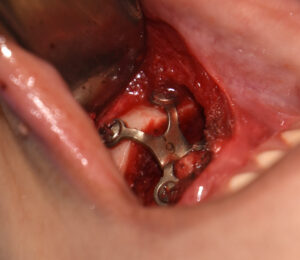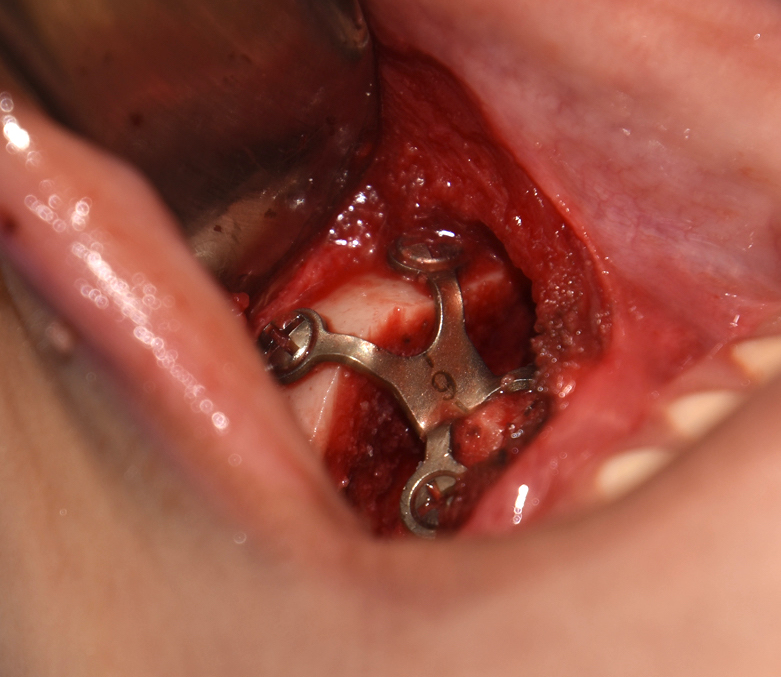The sliding genioplasty is a well known chin augmentation procedure that cuts and relocates the symphyseal bone. No matter how it is cut or what position to which it is moved it requires a bone fixation method to hold it there to heal.
While multiple bone fixation methods for the chin exist the most versatile are preformed step chin plates. Employing a strong midline strut support concept the horizontal augmentation that can be achieved is based on the millimeter length of the plate selected.
Unlike putting a bone fracture together, however, a sliding genioplasty requires deliberately holding the bone from whence it came in its new position while the plate and screws is applied. But this is not the technique that I use for application of a step chin plate. Holding the bone out in place and applying the plate and screws may work for small chin movements but it doesn’t work well in larger bone movements. The chin bone is hard to hold onto and the pull back of the attached soft tissues can be limiting.

This technique becomes absolutely essential when large sliding genioplasties are performed. It would be impossible to hold the chin segment out in place and the plate acts as an aid to do so.
This low to high plate application technique for sliding genioplasties allows a wide range of dimensional chin movements to be made securely and without special instrumentation to grab and pull the chin forward.
Dr. Barry Eppley
Indianapolis, Indiana





